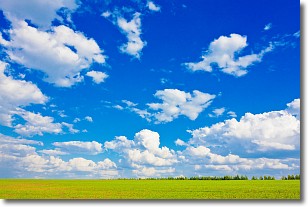Weather Alert in New Mexico
Fire Weather Watch issued May 12 at 4:35AM MDT until May 14 at 9:00PM MDT by NWS Albuquerque NM
AREAS AFFECTED: Middle Rio Grande Valley; West Central Basin and Range; Sandia and Manzano Mountains
DESCRIPTION: ...RED FLAG WARNING TODAY FROM 3 TO 8 PM FOR THE WEST CENTRAL MOUNTAINS ALONG AND WEST OF THE CONTINENTAL DIVIDE DUE TO STRONG WIND AND LOW HUMIDITY... ...FIRE WEATHER WATCH TUESDAY AND WEDNESDAY FROM 11 AM TO 9 PM FOR THE WEST CENTRAL MOUNTAINS, BASIN, AND RANGE, MIDDLE RIO GRANDE VALLEY, AND THE SANDIA AND MANZANO MOUNTAINS ALONG AND SOUTH OF HIGHWAY 60 DUE TO STRONG WIND AND LOW HUMIDITY... .Wind speeds will become strong west of the continental divide this afternoon, then become strong areawide Tuesday and Wednesday, as an upper level trough draws the jetstream over New Mexico with strong and very dry southwest winds at the surface. A gusty Pacific cold front will cross on Wednesday shifting the wind direction out of the west, then out of the northwest late in the day. After a high temperature around 8 degrees above the 30-year average in Gallup today, highs will vary from near average to around 10 degrees above across the Watch area on Tuesday, then from 3 degrees above average in Socorro County on Wednesday to around 8 degrees below average along the Arizona border. Wind speeds will also weaken some on Wednesday, but most locations will still experience single digit humidities Wednesday afternoon. The National Weather Service in Albuquerque has issued a Fire Weather Watch...which is in effect from Tuesday morning through Tuesday evening. A Fire Weather Watch has also been issued from Wednesday morning through Wednesday evening. * AREA AND TIMING...West Central Basin and Range (Zone 109), Middle Rio Grande Valley (Zone 106), and the Sandia and Manzano Mountains (Zone 124) along and south of Highway 60 both Tuesday and Wednesday from 11 AM to 9 PM. * 20 FOOT WINDS...For Tuesday: southwest 25-35 mph with gusts up to 50 mph. For Wednesday: west and eventually northwest 20-30 mph with gusts up to 40 mph. * RELATIVE HUMIDITY...For Tuesday: 9-15 percent. For Wednesday: 5-10 percent. * IMPACTS...Any fires that develop will likely spread rapidly and will be hard to control. Long range spotting and extreme fire behavior will be possible. Outdoor burning should not be done..
INSTRUCTION: Please advise the appropriate officials or fire crews in the field of this Fire Weather Watch.
Want more detail? Get the Complete 7 Day and Night Detailed Forecast!
Current U.S. National Radar--Current
The Current National Weather Radar is shown below with a UTC Time (subtract 5 hours from UTC to get Eastern Time).

National Weather Forecast--Current
The Current National Weather Forecast and National Weather Map are shown below.

National Weather Forecast for Tomorrow
Tomorrow National Weather Forecast and Tomorrow National Weather Map are show below.

North America Water Vapor (Moisture)
This map shows recent moisture content over North America. Bright and colored areas show high moisture (ie, clouds); brown indicates very little moisture present; black indicates no moisture.

Weather Topic: What are Contrails?
Home - Education - Cloud Types - Contrails
 Next Topic: Cumulonimbus Clouds
Next Topic: Cumulonimbus Clouds
A contrail is an artificial cloud, created by the passing of an
aircraft.
Contrails form because water vapor in the exhaust of aircraft engines is suspended
in the air under certain temperatures and humidity conditions. These contrails
are called exhaust contrails.
Another type of contrail can form due to a temporary reduction in air pressure
moving over the plane's surface, causing condensation.
These are called aerodynamic contrails.
When you can see your breath on a cold day, it is also because of condensation.
The reason contrails last longer than the condensation from your breath is
because the water in contrails freezes into ice particles.
Next Topic: Cumulonimbus Clouds
Weather Topic: What are Cumulus Clouds?
Home - Education - Cloud Types - Cumulus Clouds
 Next Topic: Drizzle
Next Topic: Drizzle
Cumulus clouds are fluffy and textured with rounded tops, and
may have flat bottoms. The border of a cumulus cloud
is clearly defined, and can have the appearance of cotton or cauliflower.
Cumulus clouds form at low altitudes (rarely above 2 km) but can grow very tall,
becoming cumulus congestus and possibly the even taller cumulonimbus clouds.
When cumulus clouds become taller, they have a greater chance of producing precipitation.
Next Topic: Drizzle
Current conditions powered by WeatherAPI.com




